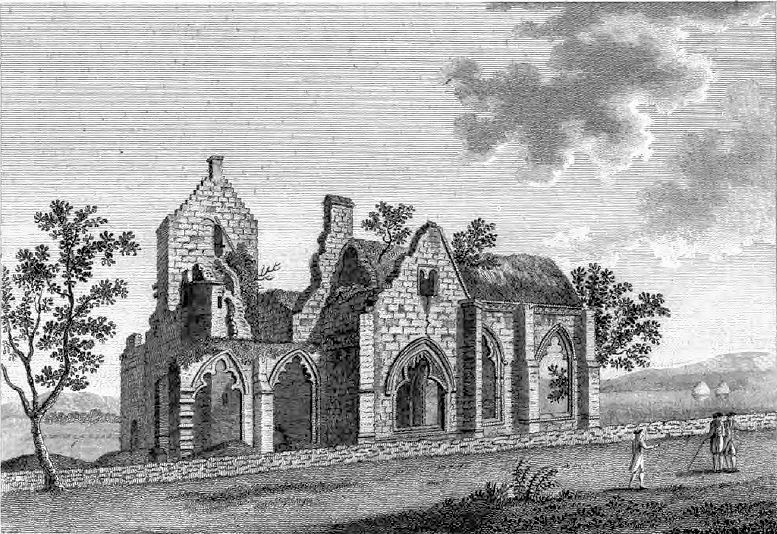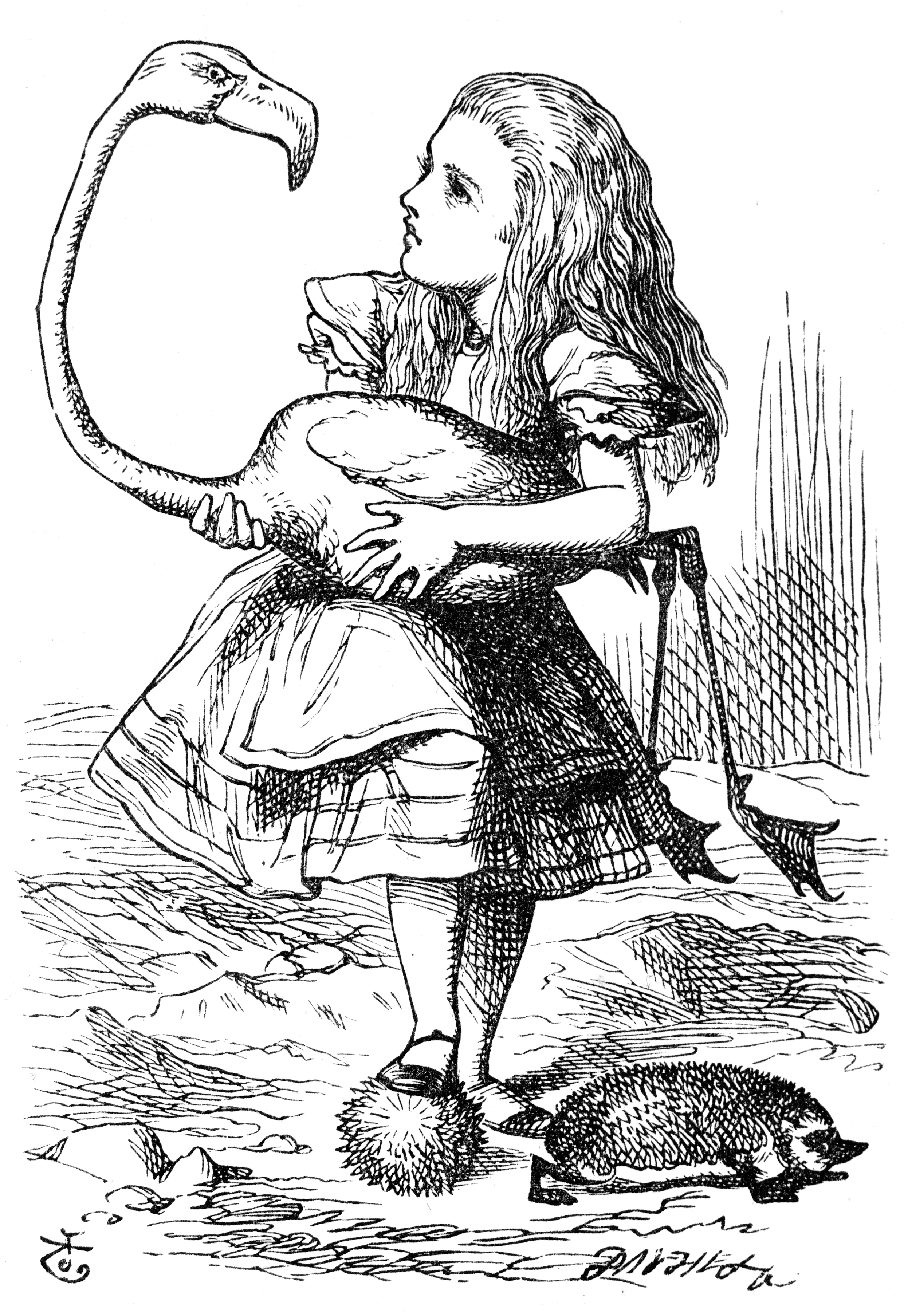|
Christie-Cleek
Christie Cleek (or -Cleek or of-the-Cleek) is a legendary Scottish cannibal, somewhat in the vein of the better-known Sawney Bean. Folklore According to folklore, his real name was Andrew Christie, a Perth butcher. During a severe famine in the mid-fourteenth century (Hector Boece records floods, murrain, and plagues of "myce and ratonis" throughout Scotland in 1340), Christie joined a group of scavengers in the foothills of the Grampians. When one of the party died of starvation, Christie put his butcher skills to work on the corpse and provided his companions with a ready meal. The group developed a taste for human flesh as, under Christie's leadership, they began to ambush travellers in the passes of the Grampians, feeding on their bodies and those of their horses. It is alleged that before attacking, Christie would haul his victims from their mounts with a hook on a rod: this implement was the "cleke" (i.e., "crook") from which he took his sobriquet. Thirty riders apparen ... [...More Info...] [...Related Items...] OR: [Wikipedia] [Google] [Baidu] |
Sawney Bean
Alexander "Sawney" Bean was said to be the head of a 45-member clan in Scotland in the 16th century that murdered and cannibalized over 1,000 people in 25 years. According to legend, Bean and his clan members were eventually caught by a search party sent by King James VI and executed for their heinous crimes. The story appeared in ''The Newgate Calendar'', a crime catalog of Newgate Prison in London. The legend lacks sufficient evidence to be deemed true by historians, and there is debate as to why the legend would have been fictionalized; nevertheless, the myth of "Sawney" Bean has passed into local folklore and has become a part of the Edinburgh tourism circuit. Legend According to ''The Newgate Calendar'', a tabloid publication from the 18th and 19th centuries, Alexander Bean was born in East Lothian during the 16th century. His father was a ditch-digger and hedge-trimmer and Bean tried to take up the family trade, but quickly realised that he was not fit for this work. He ... [...More Info...] [...Related Items...] OR: [Wikipedia] [Google] [Baidu] |
Scottish People
The Scots ( sco, Scots Fowk; gd, Albannaich) are an ethnic group and nation native to Scotland. Historically, they emerged in the early Middle Ages from an amalgamation of two Celtic-speaking peoples, the Picts and Gaels, who founded the Kingdom of Scotland (or '' Alba'') in the 9th century. In the following two centuries, the Celtic-speaking Cumbrians of Strathclyde and the Germanic-speaking Angles of north Northumbria became part of Scotland. In the High Middle Ages, during the 12th-century Davidian Revolution, small numbers of Norman nobles migrated to the Lowlands. In the 13th century, the Norse-Gaels of the Western Isles became part of Scotland, followed by the Norse of the Northern Isles in the 15th century. In modern usage, "Scottish people" or "Scots" refers to anyone whose linguistic, cultural, family ancestral or genetic origins are from Scotland. The Latin word ''Scoti'' originally referred to the Gaels, but came to describe all inhabitants of S ... [...More Info...] [...Related Items...] OR: [Wikipedia] [Google] [Baidu] |
Dumfries
Dumfries ( ; sco, Dumfries; from gd, Dùn Phris ) is a market town and former royal burgh within the Dumfries and Galloway council area of Scotland. It is located near the mouth of the River Nith into the Solway Firth about by road from the Anglo-Scottish border and just away from Cumbria by air. Dumfries is the county town of the historic county of Dumfriesshire. Before becoming King of Scots, Robert the Bruce killed his rival the Red Comyn at Greyfriars Kirk in the town on 10 February 1306. The Young Pretender had his headquarters here during a 3-day sojourn in Dumfries towards the end of 1745. During the Second World War, the bulk of the Norwegian Army during their years in exile in Britain consisted of a brigade in Dumfries. Dumfries is nicknamed ''Queen of the South''. This is also the name of the town's professional football club. People from Dumfries are known colloquially in Scots language as ''Doonhamers''. Toponymy There are a number of theories ... [...More Info...] [...Related Items...] OR: [Wikipedia] [Google] [Baidu] |
Legendary Scottish People
Legendary may refer to: * Legend, a folklore genre * Legendary (hagiography) ** Anjou Legendarium * J. R. R. Tolkien's legendarium Film and television * ''Legendary'' (film), a 2010 American sports drama film * ''Legendary'', a 2013 film featuring Dolph Lundgren * ''Legendary'' (TV series), a 2020 American reality competition series * "Legendary" (''Legends of Tomorrow''), a television episode Music Albums * ''Legendary'' (AZ album), 2009 * ''Legendary'' (The Summer Set album) or the title song, 2013 * ''Legendary'' (TQ album) or the title song, 2013 * ''Legendary'' (Tyga album) or the title song, 2019 * ''Legendary'' (Z-Ro album), 2016 * ''Legendary'' (Zao album), 2003 * ''Legendary'', by Kaysha, 2006 * '' The Legendary'', an EP by the Roots, 1999 Songs * "Legendary" (Deadmau5 and Shotty Horroh song), 2017 * "Legendary" (Welshly Arms song), 2016 * "Legendary", by Alaska Thunderfuck from ''Anus'', 2015 * "Legendary", by Daya from '' Daya'', 2015 * "Legendary", by R ... [...More Info...] [...Related Items...] OR: [Wikipedia] [Google] [Baidu] |
Scottish Serial Killers
Scottish usually refers to something of, from, or related to Scotland, including: *Scottish Gaelic, a Celtic Goidelic language of the Indo-European language family native to Scotland *Scottish English *Scottish national identity, the Scottish identity and common culture *Scottish people, a nation and ethnic group native to Scotland *Scots language, a West Germanic language spoken in lowland Scotland *Symphony No. 3 (Mendelssohn), a symphony by Felix Mendelssohn known as ''the Scottish'' See also *Scotch (other) *Scotland (other) *Scots (other) *Scottian (other) *Schottische The schottische is a partnered country dance that apparently originated in Bohemia. It was popular in Victorian era ballrooms as a part of the Bohemian folk-dance craze and left its traces in folk music of countries such as Argentina (" chotis" ... * {{disambiguation Language and nationality disambiguation pages ca:Escocès ... [...More Info...] [...Related Items...] OR: [Wikipedia] [Google] [Baidu] |
Scottish Folklore
Scottish folklore (Scottish Gaelic: ''Beul-aithris na h-Alba'') encompasses the folklore of the Scottish people from their earliest records until today. Folklorists, both academic and amateur, have published a variety of works focused specifically on the area over the years.Sanderson (1957: 457-466). Some creatures of Scottish folklore are Loch Ness Monster, brownies, bogles, kelpies, selkies, the wulver, the bean-nighe and the blue men of the Minch. Notes References * See also * Cornish mythology *English folklore *Matter of Britain * Welsh folklore *Welsh mythology *Scottish mythology Scottish mythology is the collection of myths that have emerged throughout the history of Scotland, sometimes being elaborated upon by successive generations, and at other times being rejected and replaced by other explanatory narratives. Na ... External links *Scottish Folk Tales(en) {{Folklore-stub ... [...More Info...] [...Related Items...] OR: [Wikipedia] [Google] [Baidu] |
Scottish Criminals
Scottish usually refers to something of, from, or related to Scotland, including: *Scottish Gaelic, a Celtic Goidelic language of the Indo-European language family native to Scotland *Scottish English *Scottish national identity, the Scottish identity and common culture *Scottish people, a nation and ethnic group native to Scotland *Scots language, a West Germanic language spoken in lowland Scotland *Symphony No. 3 (Mendelssohn), a symphony by Felix Mendelssohn known as ''the Scottish'' See also *Scotch (other) *Scotland (other) *Scots (other) *Scottian (other) *Schottische The schottische is a partnered country dance that apparently originated in Bohemia. It was popular in Victorian era ballrooms as a part of the Bohemian folk-dance craze and left its traces in folk music of countries such as Argentina (" chotis" ... * {{disambiguation Language and nationality disambiguation pages ca:Escocès ... [...More Info...] [...Related Items...] OR: [Wikipedia] [Google] [Baidu] |
Fictional Characters Introduced In The 15th Century
Fiction is any creative work, chiefly any narrative work, portraying individuals, events, or places that are imaginary, or in ways that are imaginary. Fictional portrayals are thus inconsistent with history, fact, or plausibility. In a traditional narrow sense, "fiction" refers to written narratives in prose often referring specifically to novels, novellas, and short stories. More broadly, however, fiction encompasses imaginary narratives expressed in any medium, including not just writings but also live theatrical performances, films, television programs, radio dramas, comics, role-playing games, and video games. Definition Typically, the fictionality of a work is publicly marketed and so the audience expects the work to deviate in some ways from the real world rather than presenting, for instance, only factually accurate portrayals or characters who are actual people. Because fiction is generally understood to not fully adhere to the real world, the themes and conte ... [...More Info...] [...Related Items...] OR: [Wikipedia] [Google] [Baidu] |
Bogeymen
The Bogeyman (; also spelled boogeyman, bogyman, bogieman, boogie monster, boogieman, or boogie woogie) is a type of mythic creature used by adults to frighten children into good behavior. Bogeymen have no specific appearance and conceptions vary drastically by household and culture, but they are most commonly depicted as masculine or Androgyny, androgynous monsters that punish children for misbehavior. The Bogeyman or conceptually similar monsters can be found in many cultures around the world. Bogeymen may target a specific act or general misbehaviour, depending on what purpose needs serving, often based on a warning from the child's authority figure. The term is sometimes used as a non-specific Anthropomorphism, personification or Metonymy, metonym for Fear, terror, and in some cases, the Devil. Etymology The word ''bogey'' originated in the mid-19th century, originally as a quasi-proper name for the devil."bogy , bogey, n.1." OED Online. Oxford University Press, March 2021. ... [...More Info...] [...Related Items...] OR: [Wikipedia] [Google] [Baidu] |
Sweeney Todd
Sweeney Todd is a fictional character who first appeared as the villain of the penny dreadful serial '' The String of Pearls'' (1846–47). The original tale became a feature of 19th-century melodrama and London legend. A barber from Fleet Street, Todd murders his customers with a straight razor and gives their corpses to Mrs. Lovett, his partner in crime, who bakes their flesh into meat pies. The tale has been retold many times since in various media. Claims that Sweeney Todd was a historical person are disputed strongly by scholars,Full text although possible legendary prototypes exist. Plot synopsis For the original version of the tale, Todd is a barber who kills his victims by pulling a lever as they sit in his barber chair. His victims fall backward through a revolving trap door into the basement of his shop, generally causing them to break their necks or skulls. In case they are alive, Todd goes to the basement and "polishes them off" (slitting their throats with his ... [...More Info...] [...Related Items...] OR: [Wikipedia] [Google] [Baidu] |




